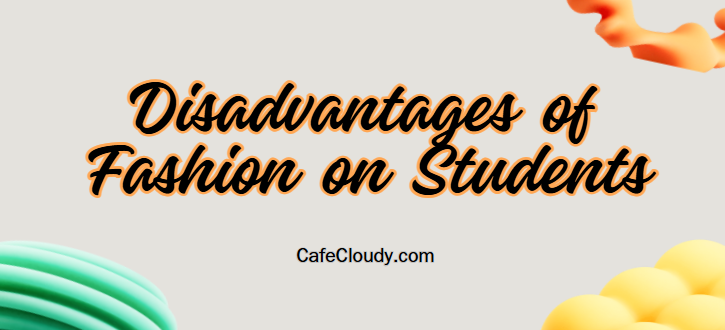
Fashion plays a significant role in shaping self-identity, particularly among university students. It can reflect personal tastes, beliefs, values, and cultural backgrounds, making fashion a powerful tool for expressing one's identity. This article explores how fashion choices contribute to the construction and expression of self-identity among students. On the other hand, fashion is sometimes used to navigate stress and emotional challenges. Family, personal values, peer pressure, social media, and cultural expectations were identified as influences that shape fashion choices.
Fashion trends can significantly impact a student’s concentration and focus in an academic setting. Wearing comfortable and appropriate clothing can enhance a student’s ability to concentrate during classes and while completing homework. On the other hand, clothing that is too restrictive or distracting can hinder learning and academic performance. It is significant for students to strike a balance between following fashion trends and maintaining focus on their academic goals. Choosing clothing that supports rather than detracts from their educational pursuits can lead to better outcomes in terms of both fashion and academics.
A trending fashion causes high pressure on students to wear a certain way in order to blend in with their friends, which may result in a financial burden on their families and their budget. This kind of pressure frequently results in a demand for name-brand apparel and accessories, which can strain families financially and widen the socioeconomic divide among youngsters. The influence of fashion on self-worth is complex, as most teenagers' perceptions can be influenced by fashion in a good way, and the rest of the people get affected negatively by its concept. Some people find that dressing stylishly boosts their self-esteem and confidence, giving them a sense of acceptability and belonging among their peer groups.
Fashion can also promote a materialistic mindset among students. When young people become overly focused on external appearances and brand names, they may begin to measure their self-worth on the basis of clothing or possessions. This promotes shallow thinking and distraction from the development of important inner qualities such as kindness, empathy, intelligence and integrity. On the other hand, in educational institutions, students should be encouraged to develop critical thinking and personal growth with a focus on fashion, but it may not lead to a negative outcome. This condition may not only affect the academic culture but also damage long-term personal development.
Fashion is a reflection of society’s social, cultural and economic environment, particularly among teenagers who are navigating the critical phases of identity formation and social development. This situation sometimes creates social division and causes peer pressure among students. For example, students who wear fashionable clothes may form exclusive groups. While students who are not able to afford those dresses are considered excluded and inferior, this leads to bullying or low self-esteem among less privileged students.
Several interviews with students show stigmatisation for not following established dress conventions, which lead to social consequences associated with nonconformity. This will create pressure on students’ values, comfort or financial capacity, which needs to be addressed for students’ emotional well-being and mental health. While some students said that fashion had little bearing on their academic performance, others said that the time and effort required to maintain a fashionable appearance could divert attention from homework.
When fashion creates peer pressure and the desire to look perfect, it can contribute to mental health issues among students. Moreover, in the age of social media, appearance is mostly exaggerated or filtered, where students may develop unrealistic beauty standards. However, constant exposure to such standards can lead to body image issues, anxiety, low self-esteem and even depression. However, in extreme cases, the pressure of looking fashionable may push students to unhealthy behaviours, such as eating disorders, compulsive shopping or cosmetic enhancement at a young age. All of these behaviours may impact the overall health conditions of students.
In conclusion, this article sheds light on the significant psychological influence that fashion has on students by highlighting both the negative aspects of fashion in their lives, which can assist teenagers in navigating the complexity of fashion and creating strong, self-assured identities by raising awareness, encouraging critical thinking, and creating supportive surroundings. The knowledge that is provided in this study can be used to improve teen wellbeing and practices, making sure that fashion is a source of unity and positivity rather than conflict or anxiety. In addition, students should be encouraged to use fashion as a means to enhance their self-esteem and motivation, without letting it overshadow their academic responsibilities. By creating a balance between fashion and learning, students can enjoy the benefits of both worlds.

This post has been authored and published by one of our premium contributors, who are experts in their fields. They bring high-quality, well-researched content that adds significant value to our platform.


